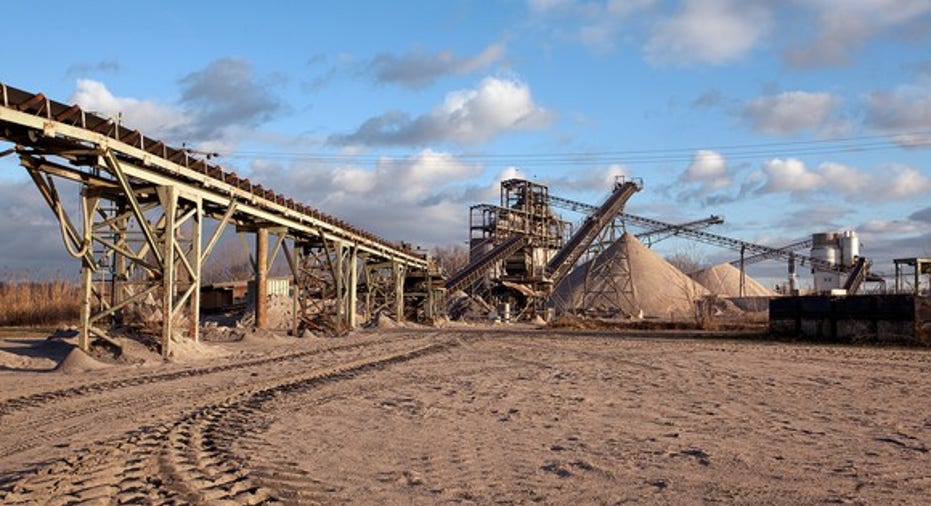U.S. Silica Is Making Some Big Bets on Growth in 2017

It may not look like it based on U.S. Silica Holdings' (NYSE: SLCA) most recent earnings report, but there are signs that the frack sand industry will be facing another round of boom times starting very soon. Producers are headed back to the oil patch, and changes to the way they drill and complete wells bode very well for sand suppliers.
According to U.S. Silica's management, there is an immense opportunity to be had here, and it is planning to be the company to satisfy that need. Here are some quotes from its most recent conference call that highlight how it plans to tackle the industry's demands for 2017 and beyond.
Image source: Getty Images.
Showing off its new toys
Over the past year, U.S. Silica was one of the few frack sand companies that had the financial flexibility to make some strategic moves to expand its business and take market share. Now that the market is on the upswing, those investments are looking like they've been smart ones that could pay off well in the future. So CEO Bryan Shinn took a victory lap as he touted the benefits of its recent acquisitions:
Meeting the needs of the next upswing
Sales of sand are up, and based on industry trends, it looks like demand will continue to rise for some time. Demand is expected to grow so much that U.S. Silica believes there is an opportunity for a very large expansion of its current capacity. Shinn believes that the company could double its capacity for the oil and gas industry in the near future:
That much additionalcapacity actually spooked the market, because the last time we saw rapid expansion plans like that was just before the oil price collapse. As many have heard, the most dangerous phrase in investing is "it's different this time," but there are signs that sand demand will expand significantly. One thing that is underpinning this surge is that sand used per well has doubled in just about every major shale basin in the U.S., and in some instances, that per-well demand has more than tripled. With per-well sand demand increasing that much, it won't take as much of an increase in total wells drilled to get back to strong demand growth.
This isn't just speculative growth, either
Another fear from analysts and Wall Street is that U.S. Silica is making these big expansion plans on a hunch and some speculation that these trends on demand will continue on their current trajectory for a while. So when asked if this was the case, Shinn pointed out that it is getting an awful lot of inquiries for it to be a purely speculativemove:
Logistics will be a big focus in 2017
The company has been highlighting its recent acquisition of SandBox quite a bit since it was purchased in the middle of last year. It even had its own breakout session at the company's analyst day meeting back in December. The ability to deliver sand the last mile to the well site and have an on-site system that reduces loading and unloading times has the potential to be a market differentiator as well as expand overall margins for the company.
Like U.S. Silica's plans to expand its production capacity, Shinn highlighted that the company is going to pour quite a bit of capital into SandBox in 2017:
Why M&A now?
With so much demand growth hitting the industrylately, the valuations for sand mines and other frack sand assets have risen significantly. Also, the capital required to bring a new sand mine on line from scratch are high, but not that high when compared to other parts of the oil and gas industry. So when asked why even bother with mergers and acquisitions when valuations are high and new facilities are cheap, Shinn noted that plans for future M&A aren't at the top of the list, just on it:
The benefits of adding the Tyler, Texas, mine and the SandBox logistics assets have been pretty clear. A greater presence in regional sand mining has allowed for lower transportation costs and quickly meeting the demand of regional customers, and improving logistics to lower delivery times and make that expensive last mile delivery are helping to grow the bottom line. So investors should think of future M&A from U.S. Silica as more of a strategic gain rather than a simple capacity gain.
Despite the tepid response from the market since U.S. Silica's earnings, the company looks to be headed in the right direction. With big plans for additional capacity and expanding its logistics footprint, investors should watch to see how they impact both revenue growth and margin expansion in 2017. Clearly, the opportunity is there. Now, U.S. Silica has to capture it the right way.
10 stocks we like better than U.S. Silica HoldingsWhen investing geniuses David and Tom Gardner have a stock tip, it can pay to listen. After all, the newsletter they have run for over a decade, Motley Fool Stock Advisor, has tripled the market.*
David and Tom just revealed what they believe are the 10 best stocks for investors to buy right now... and U.S. Silica Holdings wasn't one of them! That's right -- they think these 10 stocks are even better buys.
Click here to learn about these picks!
*Stock Advisor returns as of February 6, 2017
Tyler Crowe has no position in any stocks mentioned. The Motley Fool owns shares of Halliburton. The Motley Fool has a disclosure policy.



















